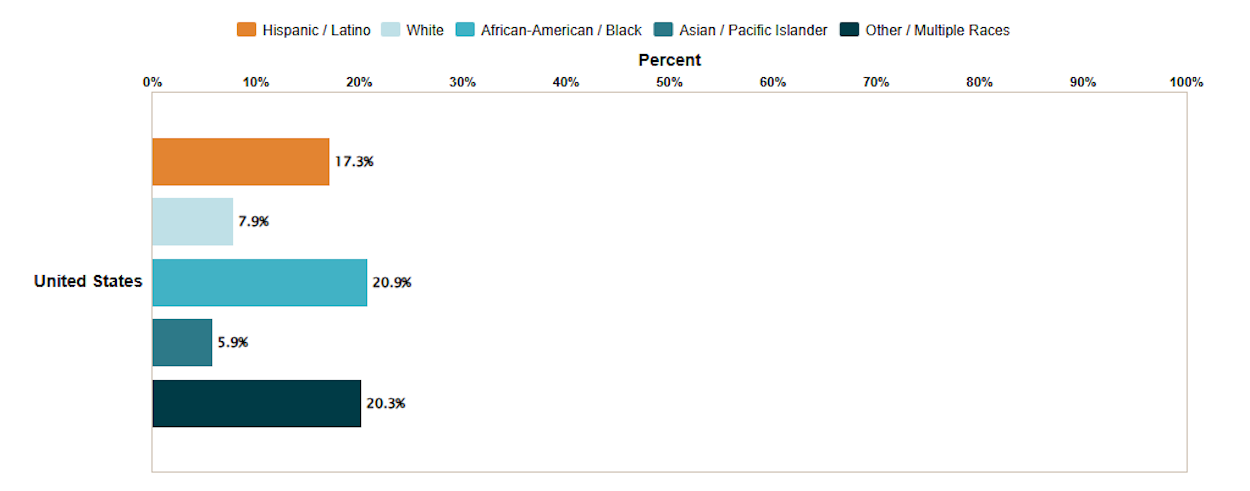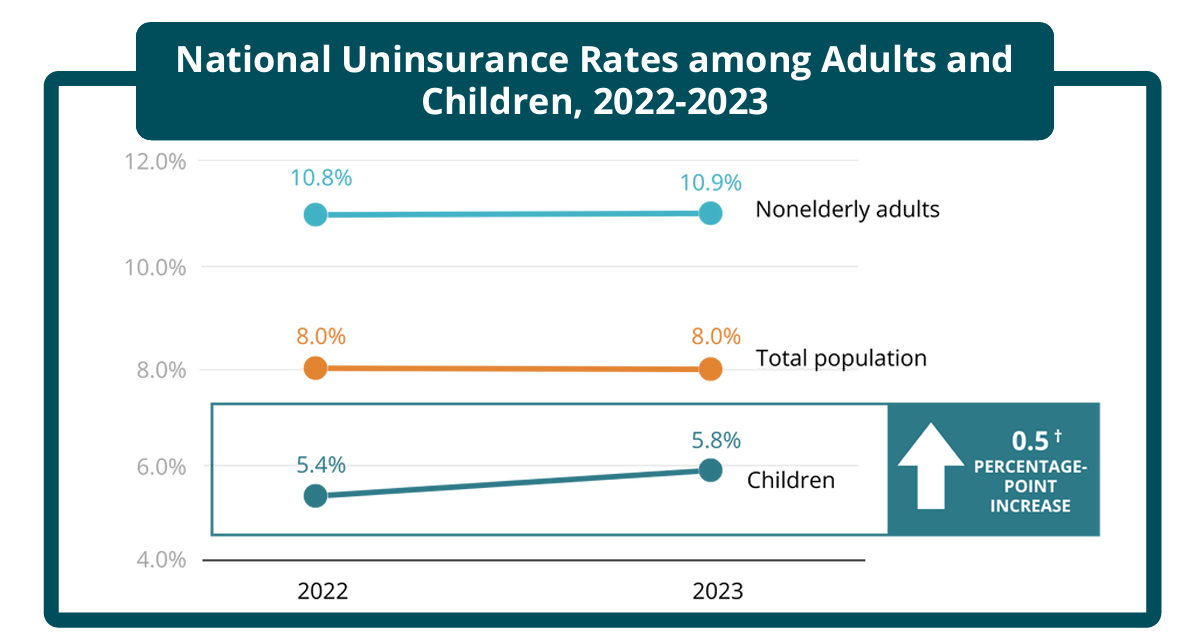Percent of people with a high medical cost burden
Measure Overview
As health care costs continue to rise in the U.S., Americans have seen out-of-pocket (OOP) spending on healthcare account for a growing share of their annual income. High OOP spending required by insurance plans can expose families with low and moderate incomes to unmanageable health care costs and lead to medical debt. Tracking rates of high medical care cost burden in the overall population and across different demographic groups helps us to understand trends and disparities in healthcare affordability.
State Health Compare provides annual, state-level estimates of high medical cost burden, defined as the percentage of individuals in families where OOP spending accounts for more than 10 percent of annual income. The data can be analyzed across different breakdowns, including employer-sponsored insurance coverage, income, and race/ethnicity. Estimates of high medical cost burden are based on public use microdata files from the Current Population Survey’s Annual Social and Economic Supplements (CPS ASEC).
State Health Compare provides annual, state-level estimates of high medical cost burden, defined as the percentage of individuals in families where OOP spending accounts for more than 10 percent of annual income. The data can be analyzed across different breakdowns, including employer-sponsored insurance coverage, income, and race/ethnicity. Estimates of high medical cost burden are based on public use microdata files from the Current Population Survey’s Annual Social and Economic Supplements (CPS ASEC).
Generate customized graphics using this data by selecting one of the options below.
Related Products

Updated Health Data Sets on State Health Compare: Explore Health Statistics and Health Data Visualizations
SHADAC’s public health research fellows and analysts consistently update measures on State Health Compare (SHC) in order to provide users with the most up-to-data available data. In this post, we will review the health data sets and measures that have been updated since our last measure update blog, including a short explanation of the measure and its data source.

CPS ASEC: 2023 National Health Insurance Coverage Estimates Remain Steady for Adults but Rise for Children
This blog post explores changes in national-level coverage rates by demographic characteristics such as age, employment, race and ethnicity, immigration status, poverty status, and Medicaid expansion status.
